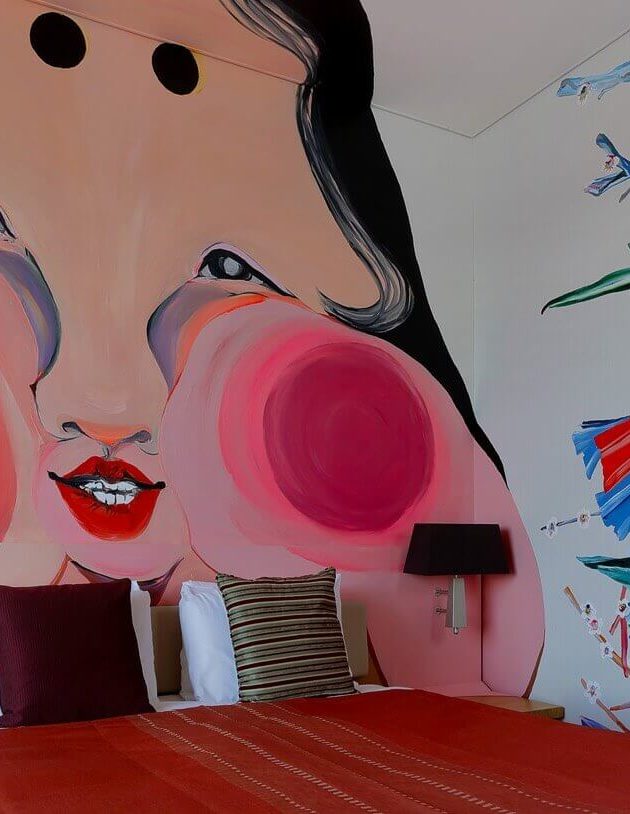Close


Masaki Art Museum, located in Tadaoka, in the Senboku district of Osaka Prefecture, possesses a wide ranging collection of tea utensils, Buddhist art works, and archaeological materials, with a particular focus on medieval painting and calligraphy. An exhibition of its works will be held for the 17th time on the 25th floor Atrium of Park Hotel Tokyo, in Tokyo Shiodome district. The theme of the exhibition on this occasion will be flowers and birds. In Japan, a country with four distinct seasons, nature and the changing of the seasons has been incorporated into the national aesthetic and artistic designs. Flowers and birds, which are also influenced by the seasons, have long been admired and have inspired numerous works of art.
We hope that you can appreciate a part of the Japanese aesthetic that emerged many years ago through the flowers and birds depicted in these works.
[Date] March 15 (Fri.) ~ June 13, 2019 (Thu.)
[Place] Atrium, Park Hotel Tokyo (25F)
[Fare] Free of Charge
[About the Masterpieces]
1. Eight-foil Mirror with Flowers, Birds and Lions Design Nara Period, 8th Century
This eight-sided mirror is made of cast bronze. The mirrors imitating cast bronze mirrors made in China began to be made in Japan since Yayoi period, and many Chinese Tang dynasty mirrors were brought to Japan during the Nara period.
This mirror exemplifies the influence of Chinese Tang dynasty mirrors. Although green rust on lower left side of the back of the mirror obscures part of the design, in the area above and below the knob through which a string would be threaded, a mandarin duck standing above the Chinese flower crest and animals to the left and right sides are visible. Outside the round ridged line is an alternating pattern of butterflies and plants. Symmetrical patterns around the edges of copper mirrors like these appear to have been common until around the 10th or 11th century, however, the designs later became increasingly subdued, and by the Heian period, a unique Japanese style of mirror had developed.
2. Bowl with gilded Flowers and Birds Heian Period, 8-12th Century
The bowl was used to store carefully washed rice and monetary offerings to be given to the gods, and it would have been placed in front of a Buddhist altar.
The entire exterior is plated, and fine patterns as thin as hair carved with a needle-like tool. It becomes narrower in the center, and the upper part has been decorated with a Chinese flower motif pattern. The narrow part is decorated with a belt-shaped pattern featuring leaves and sacred beasts, while on the bottom, a delicate plant design can be seen. On the bottom is an inscription of the meaning of one of the six used in Nara’s Buddha statue, indicating that this was once part of a six items set.
3. Xiangrui Plate in the shape of Honewort Ming Dynasty, 14-17th Century, China
The plate in the shape of honewort with very narrow leaves. Almost the whole of the plate has a thick white glaze, and the whole body is further covered in a transparent glaze. The white clay is molded rather thickly, making the object rather heavy.
The inside is finished in a fresh underglaze blue. The base is split into three parts, and covered in a landscape or turtle shell pattern without any gaps, while the inside is painted all around with a waterside scene featuring boatmen and castle.
Xiangrui were made at Jingdezhen during the Chongzhen Period (1628-1644) in the end of the Ming Dynasty. It is thought that the characteristic of Japanese design was due to the fact that it was mainly in high demand by Japanese tea masters.
4. Tea Bowl inscribed Hananoyama Yosyu Ware by Totaro Fujita, Modern
Gokosho a type of Buddhist artifact called kongosho (vajra), and is said to have been made based on weapons of Indian mythology. They were transmitted from China to Japan from the Nara period to the Heian period, and were used in esoteric Buddhism and Zen. They have a pattern with a central decoration called kimoku, and blades attached to both ends. Depending on the number and shape of these blades, they are called by various names such as dokkosho, gokosho and nanakosho.
This work has a design with a trefoil floral pattern engraved in kimoku, bordered by three lines to the left and right. It is a gokosho with four blades arranged around the center blade. The blades do not overhang to the outside, and the overall aspect is rather slim.
5. Fudo Myoo (Acala) Heian Period
This is a work by Totaro Fujita who continues to reproduce Shino-yaki which was fired in Mino (now the southern part of Gifu Prefecture) during the Momoyama era, and whose production had stopped since then. Shino-yaki is fired with a glaze made from feldspar, and its highlights are the small holes on a white surface, the iron pigment-like design, and changes in the surface color tone.
Hananoyama, the inscription on Work 4, refers to a mountain covered in blooming flowers such as cherry blossoms, and is often used as a seasonal phrase. The rim is decorated with five floral patterns, and the iron glaze design is also reminiscent of flower petals. The outside is coated in a thick layer of iron glaze, evoking the face of a mountain.